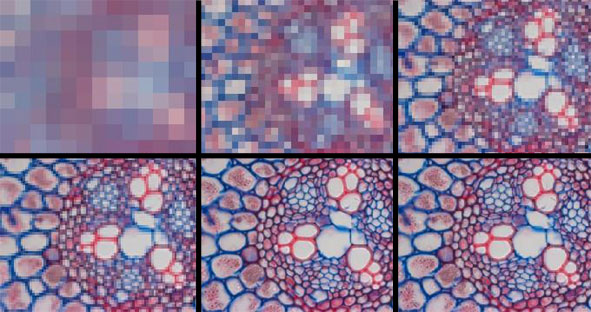Generally the better resolution you have in a digital image, the better you are able to view and identify finer details. The images below display this clearly - starting in the top left corner and working across the top row of pictures, the images get progressively clearer. As you have more mega pixels in your image, you will generally view a clearer image.

Microscope Resolution
Some cameras have different megapixels versus max pixels. This is due to microscanning, which allows the camera to have higher mega pixels.
Microscope resolution is similar to camera resolution in that as you increase magnification (and are able to view more details in the field of view) you generally do not have quite the same high quality of resolution. This is due to the numerical aperature (N.A.) of the microscope objective.
As you increase your microscope magnification (move the objective to a higher setting), your resolution in the sample decreases. For example, using a biological microscope you might have the following results:
- The 10x objective provides 0.92um resolution
- The 40x objective provides 0.37um resolution
- The 100x objective provides 0.21um resolution
Because of this, you do not always get a better image when you capture more pixels (or higher resolution) at high magnaifications. The recommended camera image resolution varies based on the image sensor area in the microscope camera. Below would be the recommendation if using the Jenoptik Prokyon with a 0.63x C-Mount adapter:
- 10x objective - 4080x3072
- 40x objective - 2720x2048
- 100x objective - 1360x1024
The main factors to consider when trying to determine camera resolution include the size of your camera chip and the N.A. of your microscope objective. Please feel free to contact us with any questions on how to apply this information to your specific microscopy needs.




